#Clarence Williams Jr.
Explore tagged Tumblr posts
Text
Clarence Williams Jr.
Statement of Candidacy Filed on 12/28/23
Identification Number: P40018418
Party: American Party
Political Committee: Clarence Darrell Williams Jr
Vice President Choice: None Stated
From: Blountville, TN
No political committee information. No information found online.
Go Back
0 notes
Text












Die Hard (1988)
#die hard#bruce willis#alan rickman#reginald veljohnson#de'voreaux white#bonnie bedelia#william atherton#james shigeta#clarence gilard jr#al leong#robert davi#grand l bush#1988
118 notes
·
View notes
Text




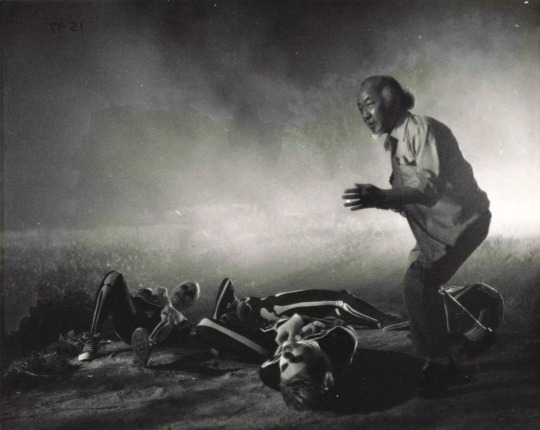




1983 Black and White Press Photos, from The Karate Kid Universe
#The Karate Kid#Behind the Scenes#Ralph Macchio#Pat Morita#Elisabeth Shue#William Zabka#Martin Kove#Randee Heller#Chad McQueen#Rob Garrison#Tony O'dell#Clarence McGee Jr.#Miyagi-horiginal
137 notes
·
View notes
Text
28 novembre … ricordiamo …
28 novembre … ricordiamo … #semprevivineiricordi #nomidaricordare #personaggiimportanti #perfettamentechic
2022: Clarence Gilyard Jr., Clarence Alfred Gilyard Jr., attore statunitense. È noto in particolare per i ruoli del ranger James Trivette in Walker Texas Ranger e dell’investigatore privato Conrad McMasters in Matlock. Sin in giovanissima età si dedica allo studio del karate e del taekwondo. Ha anche praticato football al college. Esordisce all’inizio degli anni ottanta. Da allora e per tutti gli…
#28 novembre#André Morell#Cecil André Mesritz#Christopher George#Christopher John George#Clarence Alfred Gilyard Jr.#Clarence Gilyard Jr#Cliff Emmich#Fatma Ahmad Kamal Shaker#Johanna Ernestina Petrusa Meijeringh#Karyn Kupcinet#Leslie Nielsen#Leslie William Nielsen#Maria Nielli#Maria Ricci#Morti 28 novembre#Nina Ricci#Piera Vidale#Roberta Lynn Kupcinet#Rosalind Russell#Shadia#Virgil Abloh#Yoka Berretty
0 notes
Text


Band of Brothers Birthdays
January
1 John S. Zielinski Jr. (b. 1925)
21 Richard D. “Dick” Winters (b. 1918)
26 Herbert M. Sobel (b. 1912)
30 Clifford Carwood "Lip" Lipton (b. 1920)
31 Warren H. “Skip” Muck (b. 1922) & Robert B. Brewer (b. 1924)
February
8 Clarence R. Hester (b. 1916)
18 Thomas A. Peacock (b. 1920)
23 Lester A. “Les” Hashey (b. 1925)
March
1 Charles E. “Chuck” Grant (b. 1922)
2 Colonel Robert L. “Bob” Strayer (b. 1910)
4 Wayne “Skinny” Sisk (b. 1922)
10 Frank J. Perconte (b. 1917)
13 Darrell C. “Shifty” Powers (b. 1923)
14 Joseph J. “Joe” Toye (b. 1919)
24 John D. “Cowboy” Halls (b. 1922)
26 George Lavenson (b. 1917) & George H. Smith Jr. (1922)
27 Gerald J. Loraine (b. 1913)
April
3 Colonel Robert F. “Bob” Sink (b. 1905) & Patrick S. “Patty” O’Keefe (b. 1926)
5 John T. “Johnny” Julian (b. 1924)
10 Renée B. E. Lemaire (b. 1914)
11 James W. Miller (b. 1924)
15 Walter S. “Smokey” Gordon Jr. (b. 1920)
20 Ronald C. “Sparky” Speirs (b. 1920)
23 Alton M. More (b. 1920)
27 Earl E. “One Lung” McClung (b. 1923) & Henry S. “Hank” Jones Jr. (b. 1924)
28 William J. “Wild Bill” Guarnere (b. 1923)
May
12 John W. “Johnny” Martin (b. 1922)
16 Edward J. “Babe” Heffron (b. 1923)
17 Joseph D. “Joe” Liebgott (b. 1915)
19 Norman S. Dike Jr. (b. 1918) & Cleveland O. Petty (b. 1924)
25 Albert L. "Al" Mampre (b. 1922)
June
2 David K. "Web" Webster (b. 1922)
6 Augusta M. Chiwy ("Anna") (b. 1921)
13 Edward D. Shames (b. 1922)
17 George Luz (b. 1921)
18 Roy W. Cobb (b. 1914)
23 Frederick T. “Moose” Heyliger (b. 1916)
25 Albert Blithe (b. 1923)
28 Donald B. "Hoob" Hoobler (b. 1922)
July
2 Gen. Anthony C. "Nuts" McAuliffe (b. 1898)
7 Francis J. “Frank” Mellet (b. 1920)
8 Thomas Meehan III (b. 1921)
9 John A. Janovec (b. 1925)
10 Robert E. “Popeye” Wynn (b. 1921)
16 William S. Evans (b. 1910)
20 James H. “Moe” Alley Jr. (b. 1922)
23 Burton P. “Pat” Christenson (b. 1922)
29 Eugene E. Jackson (b. 1922)
31 Donald G. "Don" Malarkey (b. 1921)
August
3 Edward J. “Ed” Tipper (b. 1921)
10 Allen E. Vest (b. 1924)
15 Kenneth J. Webb (b. 1920)
18 Jack E. Foley (b. 1922)
26 Floyd M. “Tab” Talbert (b. 1923) & General Maxwell D. Taylor (b. 1901)
29 Joseph A. Lesniewski (b. 1920)
31 Alex M. Penkala Jr. (b. 1924)
September
3 William H. Dukeman Jr. (b. 1921)
11 Harold D. Webb (b. 1925)
12 Major Oliver M. Horton (b. 1912)
27 Harry F. Welsh (b. 1918)
30 Lewis “Nix” Nixon III (b. 1918)
October
5 Joseph “Joe” Ramirez (b. 1921) & Ralph F. “Doc” Spina (b. 1919) & Terrence C. "Salty" Harris (b. 1920)
6 Leo D. Boyle (b. 1913)
10 William F. “Bill” Kiehn (b. 1921)
15 Antonio C. “Tony” Garcia (b. 1924)
17 Eugene G. "Doc" Roe (b. 1922)
21 Lt. Cl. David T. Dobie (b. 1912)
28 Herbert J. Suerth Jr. (b. 1924)
31 Robert "Bob" van Klinken (b. 1919)
November
11 Myron N. “Mike” Ranney (b. 1922)
20 Denver “Bull” Randleman (b. 1920)
December
12 John “Jack” McGrath (b. 1919)
31 Lynn D. “Buck” Compton (b. 1921)
Unknown Date
Joseph P. Domingus
Richard J. Hughes (b. 1925)
Maj. Louis Kent
Father John Mahoney
George C. Rice
SOURCES
Military History Fandom Wiki
Band of Brothers Fandom Wiki
Traces of War
Find a Grave
#this is going off who was on on the show#i double checked the dates and such but if you notice any mistakes please let me know :)#band of brothers#easy company#hbo war#not gonna tag everyone lol#mine: misc#yep it's actually Halls and not Hall#i've seen Terrence Harris's name spelled with as Terence but wenand t with two Rs s#since that's how it's spelled on photos of memorials and on his gravestone#I’ll do the pacific next! should be significantly shorter since there’s far fewer characters 😅
180 notes
·
View notes
Text

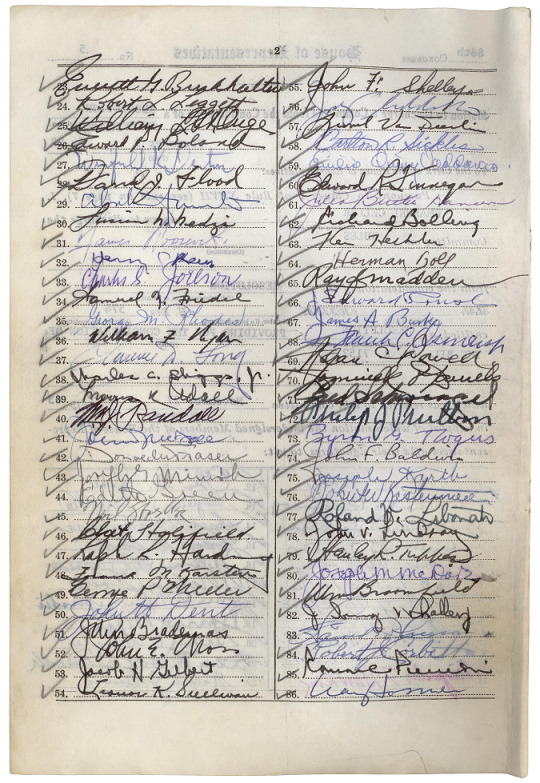
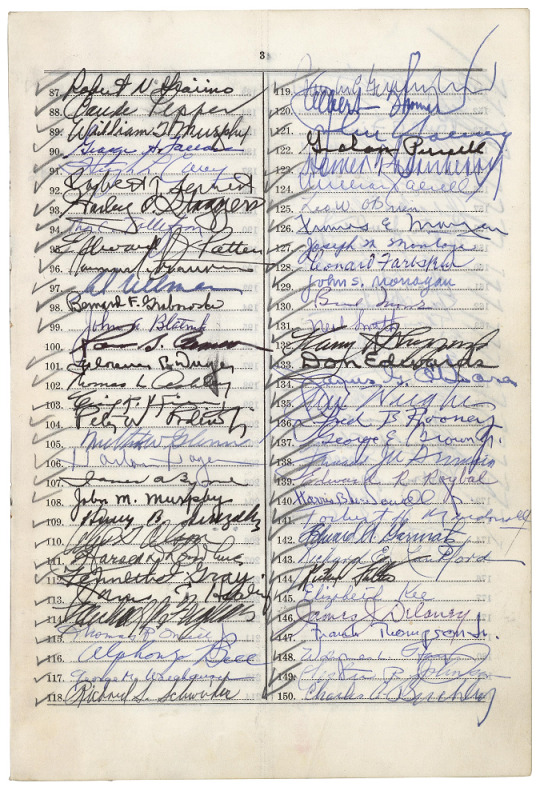

Discharge Petition for H.R. 7152, the Civil Rights Act of 1964
Record Group 233: Records of the U.S. House of RepresentativesSeries: General Records
This item, H.R. 7152, the Civil Rights Act of 1964, faced strong opposition in the House Rules Committee. Howard Smith, Chairman of the committee, refused to schedule hearings for the bill. Emanuel Celler, Chairman of the Judiciary Committee, attempted to use this discharge petition to move the bill out of committee without holding hearings. The petition failed to gain the required majority of Congress (218 signatures), but forced Chairman Smith to schedule hearings.
88th CONGRESS. House of Representatives No. 5 Motion to Discharge a Committee from the Consideration of a RESOLUTION (State whether bill, joint resolution, or resolution) December 9, 1963 To the Clerk of the House of Representatives: Pursuant to Clause 4 of Rule XXVII (see rule on page 7), I EMANUEL CELLER (Name of Member), move to discharge to the Commitee on RULES (Committee) from the consideration of the RESOLUTION; H. Res. 574 entitled, a RESOLUTION PROVIDING FOR THE CONSIDERATION OF THE BILL (H. R. 7152) which was referred to said committee November 27, 1963 in support of which motion the undersigned Members of the House of Representatives affix their signatures, to wit: 1. Emanuel Celler 2. John J. Rooney 3. Seymour Halpern 4. James G Fulton 5. Thomas W Pelly 6. Robt N. C. Nix 7. Jeffery Cohelan 8. W A Barrett 9. William S. Mailiard 10. 11. Augustus F. Hawkins 12. Otis G. Pike 13. Benjamin S Rosenthal 14. Spark M Matsunaga 15. Frank M. Clark 16. William L Dawson 17. Melvin Price 18. John C. Kluczynski 19. Barratt O'Hara 20. George E. Shipley 21. Dan Rostenkowski 22. Ralph J. Rivers[page] 2 23. Everett G. Burkhalter 24. Robert L. Leggett 25. William L St Onge 26. Edward P. Boland 27. Winfield K. Denton 28. David J. Flood 29. 30. Lucian N. Nedzi 31. James Roosevelt 32. Henry C Reuss 33. Charles S. Joelson 34. Samuel N. Friedel 35. George M. Rhodes 36. William F. Ryan 37. Clarence D. Long 38. Charles C. Diggs Jr 39. Morris K. Udall 40. Wm J. Randall 41. 42. Donald M. Fraser 43. Joseph G. Minish 44. Edith Green 45. Neil Staebler 46. 47. Ralph R. Harding 48. Frank M. Karsten 49. 50. John H. Dent 51. John Brademas 52. John E. Moss 53. Jacob H. Gilbert 54. Leonor K. Sullivan 55. John F. Shelley 56. 57. Lionel Van Deerlin 58. Carlton R. Sickles 59. 60. Edward R. Finnegan 61. Julia Butler Hansen 62. Richard Bolling 63. Ken Heckler 64. Herman Toll 65. Ray J Madden 66. J Edward Roush 67. James A. Burke 68. Frank C. Osmers Jr 69. Adam Powell 70. 71. Fred Schwengel 72. Philip J. Philiben 73. Byron G. Rogers 74. John F. Baldwin 75. Joseph Karth 76. 77. Roland V. Libonati 78. John V. Lindsay 79. Stanley R. Tupper 80. Joseph M. McDade 81. Wm Broomfield 82. 83. 84. Robert J Corbett 85. 86. Craig Hosmer87. Robert N. Giaimo 88. Claude Pepper 89. William T Murphy 90. George H. Fallon 91. Hugh L. Carey 92. Robert T. Secrest 93. Harley O. Staggers 94. Thor C. Tollefson 95. Edward J. Patten 96. 97. Al Ullman 98. Bernard F. Grabowski 99. John A. Blatnik 100. 101. Florence P. Dwyer 102. Thomas L. ? 103. 104. Peter W. Rodino 105. Milton W. Glenn 106. Harlan Hagen 107. James A. Byrne 108. John M. Murphy 109. Henry B. Gonzalez 110. Arnold Olson 111. Harold D Donahue 112. Kenneth J. Gray 113. James C. Healey 114. Michael A Feighan 115. Thomas R. O'Neill 116. Alphonzo Bell 117. George M. Wallhauser 118. Richard S. Schweiker 119. 120. Albert Thomas 121. 122. Graham Purcell 123. Homer Thornberry 124. 125. Leo W. O'Brien 126. Thomas E. Morgan 127. Joseph M. Montoya 128. Leonard Farbstein 129. John S. Monagan 130. Brad Morse 131. Neil Smith 132. Harry R. Sheppard 133. Don Edwards 134. James G. O'Hara 135. 136. Fred B. Rooney 137. George E. Brown Jr. 138. 139. Edward R. Roybal 140. Harris. B McDowell jr. 141. Torbert H. McDonall 142. Edward A. Garmatz 143. Richard E. Lankford 144. Richard Fulton 145. Elizabeth Kee 146. James J. Delaney 147. Frank Thompson Jr 148. 149. Lester R. Johnson 150. Charles A. Buckley4 151. Richard T. Hanna 152. James Corman 153. Paul A Fino 154. Harold M. Ryan 155. Martha W. Griffiths 156. Adam E. Konski 157. Chas W. Wilson 158. Michael J. Kewan 160. Alex Brooks 161. Clark W. Thompson 162. John D. Gringell [?] 163. Thomas P. Gill 164. Edna F. Kelly 165. Eugene J. Keogh 166 John. B. Duncan 167. Elmer J. Dolland 168. Joe Caul 169. Arnold Olsen 170. Monte B. Fascell [?] 171. [not deciphered] 172. J. Dulek 173. Joe W. [undeciphered] 174. J. J. Pickle [Numbers 175 through 214 are blank]
40 notes
·
View notes
Text
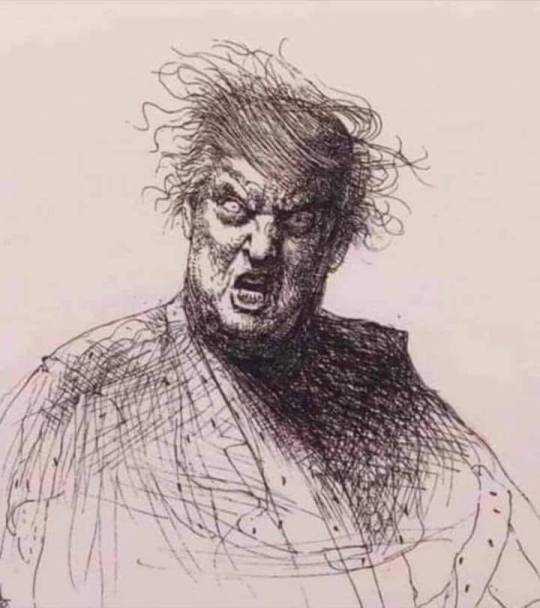
LETTERS FROM AN AMERICAN
April 30, 2024
HEATHER COX RICHARDSON
MAY 01, 2024
This morning, Time magazine published a cover story by Eric Cortellessa about what Trump is planning for a second term. Based on two interviews with Trump and conversations with more than a dozen of his closest advisors, the story lays out Trump’s conviction that he was “too nice” in his first term and that he would not make such a mistake again.
Cortellessa writes that Trump intends to establish “an imperial presidency that would reshape America and its role in the world.”
He plans to use the military to round up, put in camps, and deport more than 11 million people. He is willing to permit Republican-dominated states to monitor pregnancies and prosecute people who violate abortion bans. He will shape the laws by refusing to release funds appropriated by Congress (as he did in 2019 to try to get Ukraine president Volodymyr Zelensky to smear Hunter Biden). He would like to bring the Department of Justice under his own control, pardoning those convicted of attacking the U.S. Capitol on January 6, 2021, and ending the U.S. system of an independent judiciary. In a second Trump presidency, the U.S. might not come to the aid of a European or Asian ally that Trump thinks isn’t paying enough for its own defense. Trump would, Cortelessa wrote, “gut the U.S. civil service, deploy the National Guard to American cities as he sees fit, close the White House pandemic-preparedness office, and staff his Administration with acolytes who back his false assertion that the 2020 election was stolen.”
To that list, former political director of the AFL-CIO Michael Podhorzer added on social media that if Trump wins, “he could replace [Supreme Court justices Clarence] Thomas, [Samuel] Alito, and 40+ federal judges over 75 with young zealots.”
“I ask him, Don’t you see why many Americans see such talk of dictatorship as contrary to our most cherished principles?” Cortellessa wrote. No, Trump said. “‘I think a lot of people like it.”
Time included the full transcripts and a piece fact-checking Trump’s assertions. The transcripts reflect the former president’s scattershot language that makes little logical sense but conveys impressions by repeating key phrases and advancing a narrative of grievance. The fact-checking reveals that narrative is based largely on fantasy.
Trump’s own words prove the truth of what careful observers have been saying about his plans based on their examination of MAGA Republicans’ speeches, interviews, Project 2025, and so on, often to find themselves accused of a liberal bias that makes them exaggerate the dangers of a second Trump presidency.
The idea that truthful reporting based on verifiable evidence is a plot by “liberal media” to undermine conservative values had its start in 1951, when William F. Buckley Jr., fresh out of Yale, published God and Man at Yale: The Superstitions of “Academic Freedom.” Fervently opposed to the bipartisan liberal consensus that the federal government should regulate business, provide a basic social safety net, protect civil rights, and promote infrastructure, Buckley was incensed that voters continued to support such a system. He rejected the “superstition” that fact-based public debate would enable people to choose the best option from a wide range of ideas—a tradition based in the Enlightenment—because such debate had encouraged voters to choose the liberal consensus, which he considered socialism. Instead, he called for universities to exclude “bad” ideas like the Keynesian economics on which the liberal consensus was based, and instead promote Christianity and free enterprise.
Buckley soon began to publish his own magazine, the National Review, in which he promised to tell the “violated businessman’s side of the story,” but it was a confidential memorandum written in 1971 by lawyer Lewis M. Powell Jr. for a friend who chaired the education committee of the U.S. Chamber of Commerce that insisted the media had a liberal bias that must be balanced with a business perspective.
Warning that “the American economic system is under broad attack,” Powell worried not about “the Communists, New Leftists and other revolutionaries who would destroy the entire system.” They were, he wrote, a small minority. What he worried about were those coming from “perfectly respectable elements of society: from the college campus, the pulpit, the media, the intellectual and literary journals, the arts and sciences, and from politicians.”
Businessmen must “confront this problem as a primary responsibility of corporate management,” he wrote, launching a unified effort to defend American enterprise. Among the many plans Powell suggested for defending corporate America was keeping the media “under constant surveillance” to complain about “criticism of the enterprise system” and demand equal time.
President Richard Nixon appointed Powell to the Supreme Court, and when Nixon was forced to resign for his participation in the scheme to cover up the attempt to bug the headquarters of the Democratic National Committee in the Watergate Hotel before the 1972 election, he claimed he had to leave not because he had committed a crime, but because the “liberal” media had made it impossible for him to do his job. Six years later, Ronald Reagan, who was an early supporter of Buckley’s National Review, claimed the “liberal media” was biased against him when reporters accurately called out his exaggerations and misinformation during his 1980 campaign.
In 1987, Reagan’s appointees to the Federal Communications Commission abandoned the Fairness Doctrine that required media with a public license to present information honestly and fairly. Within a year, talk radio had gone national, with hosts like Rush Limbaugh electrifying listeners with his attacks on “liberals” and his warning that they were forcing “socialism” on the United States.
By 1996, when Australian-born media mogul Rupert Murdoch started the Fox News Channel (FNC), followers had come to believe that the news that came from a mainstream reporter was likely left-wing propaganda. FNC promised to restore fairness and balance to American political news. At the same time, the complaints of increasingly radicalized Republicans about the “liberal media” pushed mainstream media to wander from fact-based reality to give more and more time to the right-wing narrative. By 2018, “bothsidesing” had entered our vocabulary to mean “the media or public figures giving credence to the other side of a cause, action, or idea to seem fair or only for the sake of argument when the credibility of that side may be unmerited.”
In 2023, FNC had to pay almost $800 million to settle defamation claims made by Dominion Voting Systems after FNC hosts pushed the lie that Dominion machines had changed the outcome of the 2020 presidential election, and it has since tried to retreat from the more egregious parts of its false narrative.
News broke yesterday that Hunter Biden’s lawyer had threatened to sue FNC for “conspiracy and subsequent actions to defame Mr. Biden and paint him in a false light, the unlicensed commercial exploitation of his image, name, and likeness, and the unlawful publication of hacked intimate images of him.” Today, FNC quietly took down from its streaming service its six-part “mock trial” of Hunter Biden, as well as a video promoting the series.
Also today, Judge Juan Merchan, who is presiding over Trump’s criminal trial for election fraud, found Trump in contempt of court for attacking witnesses and jurors. Merchan also fined Trump $1,000 per offense, required him to take down the nine social media posts at the heart of the decision, and warned him that future violations could bring jail time. This afternoon, Trump’s team deleted the social media posts.
For the first time in history, a former U.S. president has been found in contempt of court. We know who he is, and today, Trump himself validated the truth of what observers who deal in facts have been saying about what a second Trump term would mean for the United States.
Reacting to the Time magazine piece, James Singer, the spokesperson for the Biden-Harris campaign, released a statement saying: “Not since the Civil War have freedom and democracy been under assault at home as they are today—because of Donald Trump. Trump is willing to throw away the very idea of America to put himself in power…. Trump is a danger to the Constitution and a threat to democracy.”
Tomorrow, May 1, is “Law Day,” established in 1958 by Republican president Dwight D. Eisenhower as a national recognition of the importance of the rule of law. In proclaiming the holiday today, Biden said: “America can and should be a Nation that defends democracy, protects our rights and freedoms, and pioneers a future of possibilities for all Americans. History and common sense show us that this can only come to pass in a democracy, and we must be its keepers.”
LETTERS FROM AN AMERICAN
HEATHER COX RICHARDSON
#Eric Cortellessa#Time Magazine#TFG#MAGA extremism#contempt of court#rule of law#history#William F. Buckley Jr.#Heather Cox Richardson#Letters from An American#democracy#election 2024
15 notes
·
View notes
Text
MO governor Mike Parson and US supreme court justices John Roberts, Clarence Thomas, Samuel Alito Jr, Neil Gorsuch, Brett Kavanaugh, and Amy Coney Barrett have Khaliifah (Marcellus) Williams' blood on their hands.
Khaliifah was an innocent man. but that doesn't matter. it shouldn't matter. no crime is worth the death penalty. remember that the democratic party removed opposition to the death penalty from their platform.
the united states' justice system was built on racism. and tonight they murdered yet another Black Muslim man. may Allah grant him Jannah. may Allah rest his soul in peace.
8 notes
·
View notes
Text





Title: Die Hard
Rating: R
Director: John McTiernan
Cast: Bruce Willis, Alan Rickman, Alexander Godunov, Bonnie Bedelia, Reginald VelJohnson, Paul Gleason, De'voreaux White, William Atherton, Hart Bochner, James Shigeta, Bruno Doyon, Andreas Wisniewski, Clarence Gilyard Jr, Joey Plewa
Release year: 1988
Genres: thriller, action
Blurb: NYPD cop John McClane's plan to reconcile with his estranged wife is thrown for a serious loop when, minutes after he arrives at her office, the entire building is overtaken by a group of terrorists. With little help from the LAPD, wisecracking McClane sets out to singlehandedly rescue the hostages and bring the bad guys down.
#die hard#die hard 2 die harder#die hard with a vengeance#live free or die hard#a good day to die hard#r#john mctiernan#bruce willis#alan rickman#alexander godunov#bonnie bedelia#reginald veljohnson#1988#thriller#action
6 notes
·
View notes
Text

Vilma Banky and Rudolph Valentino in The Eagle (Clarence Brown, 1925)
Cast: Rudolph Valentino, Vilma Banky, Louise Dresser, Albert Conti, James A. Marcus, George Nichols, Carrie Clark Ward. Screenplay: Hanns Kräly, based on a novel by Alexander Pushkin; titles: George Marion Jr. Cinematography: George Barnes. Production design: William Cameron Menzies. Film editing: Hal C. Kern.
It's easy to overlook the absurdities of the story of The Eagle because the filmmakers embrace them, and everyone seems to be having so much fun. Rudolph Valentino is Vladimir Dubrovsky, a dashing (what else?) lieutenant in the Russian Imperial Guard, who catches the eye of Catherine the Great (Louise Dresser) when he rescues a pretty young woman (Vilma Banky) and her aunt (Carrie Clark Ward) from a carriage pulled by a runaway horse. Catherine wants him for herself, of course, but Vladimir is shocked by her advances and flees. Meanwhile, he learns that his father has been victimized by a wicked aristocrat, Kyrilla Troekouroff(James A. Marcus), who has confiscated his lands. When his father dies, Vladimir vows vengeance against Kyrilla, and assumes the identity of the Black Eagle, a Zorro-like figure who wears a mask and rights the wrongs of Kyrilla against the peasantry. (In fact, the Black Eagle wasn't in the Pushkin story on which the movie is based; he was inspired by the success of the 1920 Douglas Fairbanks swashbuckler The Mark of Zorro directed by Fred Niblo.) And wouldn't you know it, Kyrilla's daughter, Mascha, turns out to be the pretty young woman he rescued in the runaway carriage. Disguising himself as a French teacher, he works his way into Kyrilla's household and woos Mascha. Meanwhile, the empress has put a price on Vladimir's head for desertion, so when he manages to win Masca and defeat her father, he still faces a firing squad. This is probably Valentino's most light-hearted performance, and he gets fine support from Banky and especially Dresser as the randy czarina.
8 notes
·
View notes
Text
CHRONOLOGY OF AMERICAN RACE RIOTS AND RACIAL VIOLENCE p-5
1961 May First Freedom Ride. 1962 Harlem Youth Opportunities Unlimited (HARYOU) is founded. Robert F. Williams publishes Negroes with Guns, exploring Williams’ philosophy of black self-defense. October Two die in riots when President John F. Kennedy sends troops to Oxford,Mississippi, to allow James Meredith to become the first African American student to register for classes at the University of Mississippi. 1963 Publication of The Fire Next Time by James Baldwin. Revolutionary Action Movement (RAM) is founded. April Rev. Martin Luther King, Jr., writes his ‘‘Letter from Birmingham Jail.’’
June Civil rights leader Medgar Evers is assassinated in Mississippi. August March on Washington; Rev. King delivers his ‘‘I Have a Dream’’ speech before the Lincoln Memorial in Washington, D.C.
September Four African American girls—Carol Denise McNair, Cynthia Wesley, Carole Robertson, and Addie Mae Collins—are killed when a bomb explodes at theSixteenth Street Baptist Church in Birmingham, Alabama. 1964 June–August Three Freedom Summer activists—James Earl Chaney, Andrew Goodman, and Michael Schwerner—are arrested in Philadelphia, Mississippi; their bodies are discovered six weeks later; white resistance to Freedom Summer activities leads to six deaths, numerous injuries and arrests, and property damage acrossMississippi. July President Lyndon Johnson signs the Civil Rights Act. New York City (Harlem) riot. Rochester, New York, riot. Brooklyn, New York, riot. August Riots in Jersey City, Paterson, and Elizabeth, New Jersey. Chicago, Illinois, riot. Philadelphia, Pennsylvania, riot. 1965 February While participating in a civil rights march from Selma to Montgomery, Alabama, Jimmie Lee Jackson is shot by an Alabama state trooper. Malcolm X is assassinated while speaking in New York City. March Bloody Sunday march ends with civil rights marchers attacked and beaten by local lawmen at the Edmund Pettus Bridge outside Selma, Alabama. Lowndes County Freedom Organization (LCFO) is formed in Lowndes County,Alabama. First distribution of The Negro Family: The Case for National Action, better known as The Moynihan Report, which was written by Undersecretary of Labor Daniel Patrick Moynihan and Nathan Glazer. July Springfield, Massachusetts, riot. August Los Angeles (Watts), California, riot. 1965–1967 A series of northern urban riots occurring during these years, including disorders in the Watts section of Los Angeles, California (1965), Newark, New Jersey (1967), and Detroit, Michigan (1967), becomes known as the Long Hot Summer Riots. 1966 May Stokely Carmichael elected national director of the Student Nonviolent Coordinating Committee (SNCC). June James Meredith is wounded by a sniper while walking from Memphis, Tennessee, to Jackson, Mississippi; Meredith’s March Against Fear is taken up by Martin Luther King, Jr., Stokely Carmichael, and others. July Cleveland, Ohio, riot. Murder of civil rights demonstrator Clarence Triggs in Bogalusa, Louisiana. September Dayton, Ohio, riot. San Francisco (Hunters Point), California, riot. October Black Panther Party (BPP) founded by Huey P. Newton and Bobby Seale. 1967
Publication of Black Power: The Politics of Liberation by Stokely Carmichael and Charles V. Hamilton. May Civil rights worker Benjamin Brown is shot in the back during a student protest in Jackson, Mississippi. H. Rap Brown succeeds Stokely Carmichael as national director of the Student Nonviolent Coordinating Committee (SNCC). Texas Southern University riot (Houston, Texas). June Atlanta, Georgia, riot. Buffalo, New York, riot. Cincinnati, Ohio, riot. Boston, Massachusetts, riot. July Detroit, Michigan, riot. Newark, New Jersey, riot. 1968 Publication of Soul on Ice by Eldridge Cleaver. February During the so-called Orangeburg, South Carolina Massacre, three black college students are killed and twenty-seven others are injured in a confrontation with police on the adjoining campuses of South Carolina State College and Claflin College. March Kerner Commission Report is published. April Dr. Martin Luther King, Jr., is assassinated in Memphis, Tennessee. President Lyndon Johnson signs the Civil Rights Act of 1968. Washington, D.C., riot. Cincinnati, Ohio, riot. August Antiwar protestors disrupt the Democratic National Convention in Chicago. 1969 May James Forman of the SNCC reads his Black Manifesto, which calls for monetary reparations for the crime of slavery, to the congregation of Riverside Church in New York; many in the congregation walk out in protest. July York, Pennsylvania, riot. 1970 May Two unarmed black students are shot and killed by police attempting to control civil rights demonstrators at Jackson State University in Mississippi. Augusta, Georgia, riot. July New Bedford, Massachusetts, riot. Asbury Park, New Jersey, riot. 1973 July So-called Dallas Disturbance results from community anger over the murder of a twelve-year-old Mexican-American boy by a Dallas police officer. 1975–1976 A series of antibusing riots rock Boston, Massachusetts, with the violence reaching a climax in April 1976. 1976 February Pensacola, Florida, riot. 1980 May Miami, Florida, riot. 1981 March Michael Donald, a black man, is beaten and murdered by Ku Klux Klan members in Mobile, Alabama. 1982 December Miami, Florida, riot. 1985 May Philadelphia police drop a bomb on MOVE headquarters, thereby starting a fire that consumed a city block. 1986 December Three black men are beaten and chased by a gang of white teenagers in Howard Beach, New York; one of the victims of the so-called Howard Beach Incident is killed while trying to flee from his attackers. 1987 February–April Tampa, Florida, riots. 1989 Release of Spike Lee’s film, Do the Right Thing. Representative John Conyers introduces the first reparations bill into Congress—the Commission to Study Reparation Proposals for African Americans Act; this and all subsequent reparations measures fail passage. August Murder of Yusef Hawkins, an African American student killed by Italian-American youths in Bensonhurst, New York. 1991 March Shooting in Los Angeles of an African American girl, fifteen-year-old Latasha Harlins, by a Korean woman who accused the girl of stealing. Los Angeles police officers are caught on videotape beating African American motorist Rodney King. 1992 April Los Angeles (Rodney King), California, riot. 1994 Survivors of the Rosewood, Florida, riot of 1923 receive reparations. February Standing trial for a third time, Byron de la Beckwith is convicted of murdering civil rights worker Medgar Evers in June 1963.
19 notes
·
View notes
Text
"Trumps Criminal Associates from A to Z”
Donald Trump, Melania Trump, Donald Trump Jr., Ivanka Trump, Eric Trump; >>> Greg Abbott, Ali Alexander, Samuel Alito, Rick Allen, Brian Babin, Jim Banks, Steve Bannon, Kathy Barnette, Bill Barr, Tom Barrack, Maria Bartiromo, Glenn Beck, John Bennett, Andy Biggs, Dan Bishop, Christina Bobb, Lauren Boebert, John Bolton, David Bossie, Kevin Brady, Mike Braun, Mo Brooks, Taylor Budowich, Ted Budd, Aileen Cannon, Madison Cawthorn, Tucker Carlson, Matthew Calamari, Kenneth Chesebro, Andrew Clyde, Jeffery Clark, Robert Cheeley, Chris Christie, Chris Collins, Susan Collins, James Comer, Kellyanne Conway, John Cornyn, Thomas Bryant Cotton, Kevin Cramer, Dan Crenshaw, Steven Crowder, Raphael Edward Cruz, Ken Cuccinelli, Warren Davidson, Louis DeJoy, Carlos DeOliveira, Ron DeSantis, Betsy DeVos, Lou Dobbs, Byron Donalds, John Eastman, Larry Elder, Jenna Ellis, Michael Ellis, Tom Emmer, Boris Epshteyn, Julie Jenkins Fancelli, Nigel Farage, Tom Fitton, Harrison Floyd, Michael Flynn, Matt Gaetz, Bob Gibbs, Newt Gingrich, Rudy Giuliani, Louie Gohmert, Sebastian Gorka, Paul Gosar, Trey Gowdy, Lindsey Graham, Charles Grassley, Mark Green, Marjorie Taylor Greene, Ric Grenell, Kimberly Guilfoyle, Alina Habba, Harriet Hageman, Misty Hampton, Liz Harrington, Nikki Haley, Scott Hall, Sean Hannity, Josh Hawley, Jody Hice, Hope Hicks, Thomas Homan, Richard Hudson, Duncan Hunter, Laura Ingraham, Kay Ivey, Ronny Jackson, Jim Jordan, Mike Johnson, Ron Johnson, Alex Jones, Fred Keller, Keith Kellogg, Mike Kelly, Bernard Kerik, Charlie Kirk, Kim Klacik, Kenneth Klukowski, Jared Kushner, Trevian Kutti, Tomi Lahren, Kari Lake, Cathleen Latham, Bill Lee, Mike Lee, Stephen Lee, Mark Levin, Corey Lewandowski, Christopher Liddell, Mike Lindell, Billy Long, Barry Loudermilk, Cynthia Lummis, Nick Luna, Nancy Mace, Paul Manafort, Roger Marshall, Thomas Massie, Douglas Mastriano, Angela McCallum, Kevin McCarthy, Mitch McConnell, Ronna Romney McDaniel, Kayleigh McEnany, Johnny McEntee, Mark Meadows, Molly Michael, Chris Miller, Jason Miller, Stephen Miller, Barry Moore, Steven Mnuchin, Rupert Murdoch, Greg Murphy, Heather Nauret, Waltine Torre Nauta Jr., Peter Navarro, Carl Nichols, Kristi Noem, Ralph Norman, Oliver North, Devin Nunes, Bill O’Reilly, Candace Owens, Stefan Passantino, Kash Patel, Dan Patrick, Rand Paul, Ken Paxton, David Perdue, Scott Perry, Rick Perry, Mike Pence, Judge-Jeanine Ferris Pirro, Mike Pompeo, Erik Prince, Vladimir Putin, Sidney Powell, Kim Reynolds, Karrin Taylor Robson, Michael Roman, Chip Roy, Marco Rubio, Anthony Sabatini, Sarah Huckabee Sanders, George Santos, Steve Scalise, Dan Scavino, Rick Scott, Tim Scott, Jeff Sessions, David Shafer, Ben Shapiro, Bill Shine, Kyrsten Lea Sinema, Ray Smith lll, Victoria Spartz, Sean Spicer, Todd Starnes, Elise Stefanik, William Stepien, Shawn Still, Roger Stone, Jason Sullivan, Clarence Thomas, Virginia (Ginni) Thomas, Tommy Tuberville, Mike Turner, James David (JD) Vance, Herschel Walker, Kelli Ward, Jesse Watters, Allen Weisselberg, Matthew George Whitaker, Susan Wiles, Ben Williamson, Chad Wolf, Lin Wood, Todd Young…Just to name a few. “Vote Blue in November: In numbers too big to rig, in numbers too real to steal….
381 Comments https://www.youtube.com/watch?v=SY8rIL3xUKc
8 notes
·
View notes
Text
MLK Celebration Gala pays tribute to Martin Luther King Jr. and his writings on “the goal of true education”
New Post has been published on https://thedigitalinsider.com/mlk-celebration-gala-pays-tribute-to-martin-luther-king-jr-and-his-writings-on-the-goal-of-true-education/
MLK Celebration Gala pays tribute to Martin Luther King Jr. and his writings on “the goal of true education”
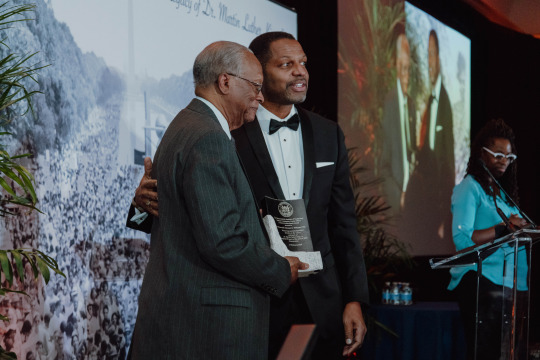

After a week of festivities around campus, members of the MIT community gathered Saturday evening in the Boston Marriott Kendall Square ballroom to celebrate the life and legacy of Martin Luther King Jr. Marking 50 years of this annual celebration at MIT, the gala event’s program was loosely organized around a line in King’s essay, “The Purpose of Education,” which he penned as an undergraduate at Morehouse College:
“We must remember that intelligence is not enough,” King wrote. “Intelligence plus character — that is the goal of true education.”
Senior Myles Noel was the master of ceremonies for the evening and welcomed one and all. Minister DiOnetta Jones Crayton, former director of the Office of Minority Education and associate dean of minority education, delivered the invocation, exhorting the audience to embrace “the fiery urgency of now.” Next, MIT President Sally Kornbluth shared her remarks.
She acknowledged that at many institutions, diversity and inclusion efforts are eroding. Kornbluth reiterated her commitment to these efforts, saying, “I want to be clear about how important I believe it is to keep such efforts strong — and to make them the best they can be. The truth is, by any measure, MIT has never been more diverse, and it has never been more excellent. And we intend to keep it that way.”
Kornbluth also recognized the late Paul Parravano, co-director of MIT’s Office of Government and Community Relations, who was a staff member at MIT for 33 years as well as the longest-serving member on the MLK Celebration Committee. Parravano’s “long and distinguished devotion to the values and goals of Dr. Martin Luther King, Jr. inspires us all,” Kornbluth said, presenting his family with the 50th Anniversary Lifetime Achievement Award.
Next, students and staff shared personal reflections. Zina Queen, office manager in the Department of Political Science, noted that her family has been a part of the MIT community for generations. Her grandmother, Rita, her mother, Wanda, and her daughter have all worked or are currently working at the Institute. Queen pointed out that her family epitomizes another of King’s oft-repeated quotes, “Every man is an heir to a legacy of dignity and worth.”
Senior Tamea Cobb noted that MIT graduates have a particular power in the world that they must use strategically and with intention. “Education and service go hand and hand,” she said, adding that she intends “every one of my technical abilities will be used to pursue a career that is fulfilling, expansive, impactful, and good.”
Graduate student Austin K. Cole ’24 addressed the Israel-Hamas conflict and the MIT administration. As he spoke, some attendees left their seats to stand with Cole at the podium. Cole closed his remarks with a plea to resist state and structural violence, and instead focus on relationship and mutuality.
After dinner, incoming vice president for equity and inclusion Karl Reid ’84, SM ’85 honored Adjunct Professor Emeritus Clarence Williams for his distinguished service to the Institute. Williams was an assistant to three MIT presidents, served as director of the Office of Minority Education, taught in the Department of Urban Planning, initiated the MIT Black History Project, and mentored hundreds of students. Reid was one of those students, and he shared a few of his mentor’s oft repeated phrases:
“Do the work and let the talking take care of itself.”
“Bad ideas kill themselves; great ideas flourish.”
In closing, Reid exhorted the audience to create more leaders who, like Williams, embody excellence and mutual respect for others.
The keynote address was given by civil rights activist Janet Moses, a member of the Student Nonviolent Coordinating Committee (SNCC) in the 1960s; a physician who worked for a time as a pediatrician at MIT Health; a longtime resident of Cambridge, Massachusetts; and a co-founder, with her husband, Robert Moses, of the Algebra Project, a pioneering program grounded in the belief “that in the 21st century every child has a civil right to secure math literacy — the ability to read, write, and reason with the symbol systems of mathematics.”
A striking image of a huge new building planned for New York City appeared on the screen behind Moses during her address. It was a rendering of a new jail being built at an estimated cost of $3 billion. Against this background, she described the trajectory of the “carceral state,” which began in 1771 with the Mansfield Judgement in England. At the time, “not even South Africa had a set of race laws as detailed as those in the U.S.,” Moses observed.
Today, the carceral state uses all levels of government to maintain a racial caste system that is deeply entrenched, Moses argued, drawing a connection between the purported need for a new prison complex and a statistic that Black people in New York state are three times more likely than whites to be convicted for a crime.
She referenced a McKinsey study that it will take Black people over three centuries to achieve a quality of life on parity with whites. Despite the enormity of this challenge, Moses encouraged the audience to “rock the boat and churn the waters of the status quo.” She also pointed out that “there is joy in the struggle.”
Symbols of joy were also on display at the Gala in the forms of original visual art and poetry, and a quilt whose squares were contributed by MIT staff, students, and alumni, hailing from across the Institute.
Quilts are a physical manifestation of the legacy of the enslaved in America and their descendants — the ability to take scraps and leftovers to create something both practical and beautiful. The 50th anniversary quilt also incorporated a line from King’s highly influential “I Have a Dream Speech”:
“One day, all God’s children will have the riches of freedom and the security of justice.”
#Administration#Africa#America#anniversary#Art#background#billion#Building#career#challenge#Children#civil rights#college#Community#Conflict#crime#Department of Political Science#display#diversity#Diversity and Inclusion#education#equity#Faculty#Featured#Forms#generations#Government#hand#Health#History
2 notes
·
View notes
Text
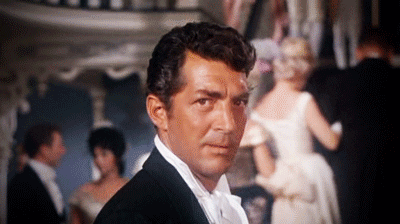
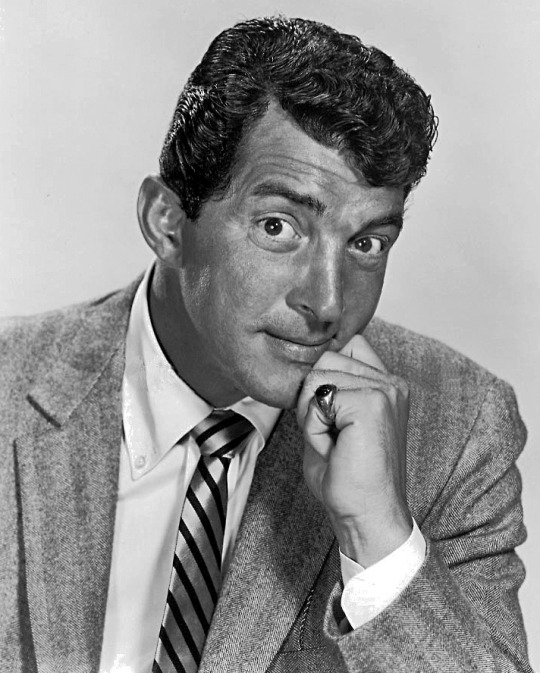
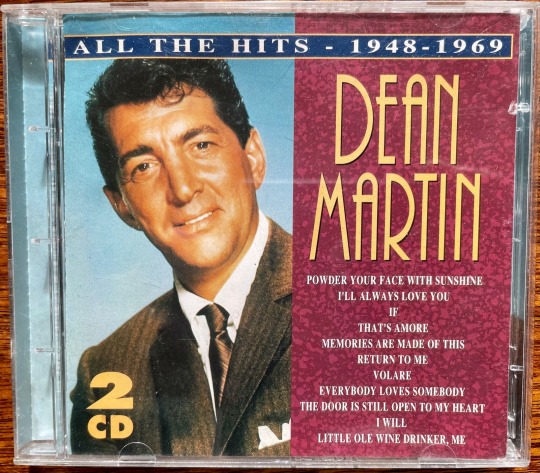
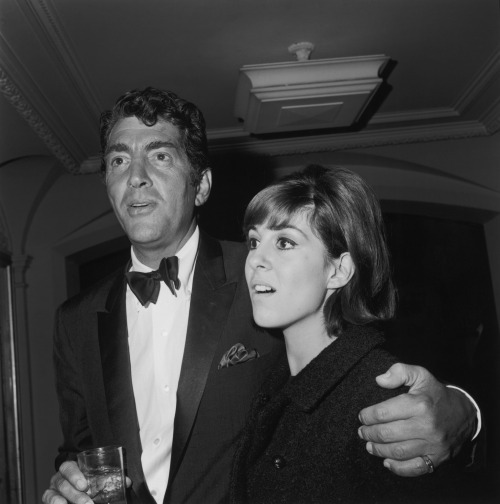
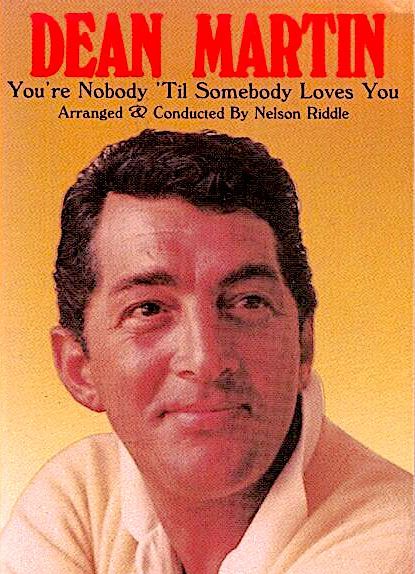


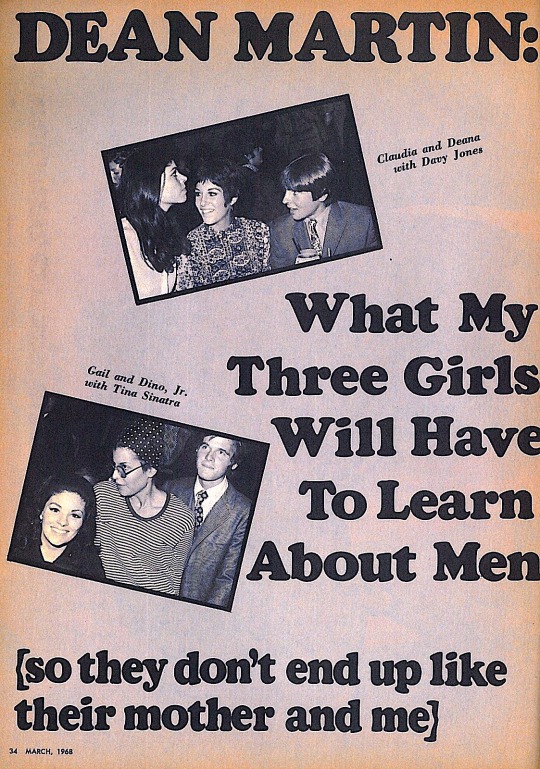
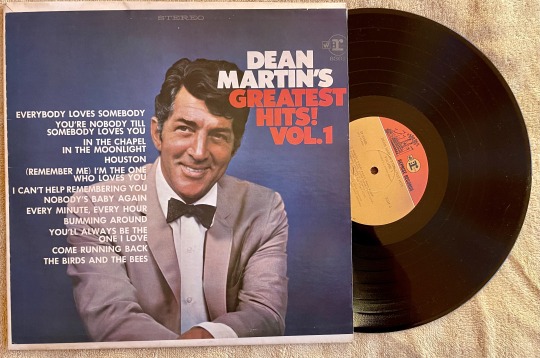
HAPPY BIRTHDAY to Speedy Acquaye, Hirohiko Araki, the 1969 debut of Blind Faith, Beryl Booker, Gwendolyn Brooks, Royce Campbell (Funk Brothers), THE JOHNNY CASH SHOW 1969 TV debut, Georgiana Cavendish, the great Johnny Clegg, Silas Roy Crain (Soul Stirrers), George Ezra, Tal Farlow, William Forsythe, Gordon Gano, Paul Gauguin, Nikki Giovanni, Juan Luis Guerra, Damien Hirst, Nihad Hrustanbegović, Tommy James & The Shondells 1969 “Crystal Blue Persuason” single, Mickey Jones (Man), Tom Jones (great to have met you), Paddy McAloon (Prefab Sprout), Dave Navarro, Liam Neeson, Ken Osmond, Prince, Jack Ryland (3 Dog Night), George Szell, Jessica Tandy, Karl Urban, Clarence White, and the legendary, consummate entertainer, comedian, singer, and actor, Dean Martin. In the late 1940s he broke out in a hugely successful comedy duo with Jerry Lewis, then was seared into public conciousness with Frank Sinatra and Sammy Davis, Jr. in The Rat Pack. My respect for Dino grew around his musical choices and catalogue of material. I do several covers of his songs (especially in my care home set) and my original song “Somebody Loves You (Like Dino Said)” has a direct refraction on Dean’s “You’re Nobody Till Somebody Loves You.” In 1955 he had a #1 hit with the folk-doo wop song “Memories Are Made of This.” It became a theme for a book written by his daughter Deana, a singer in her own right whose career intersected with The Monkees and Davy Jones (they also dated back in the day), and there was a phase where she’d sit in on our gigs + she sang with us at Davy’s 2012 New York memorial and a Monkees Convention in 2013. Davy was also close friends with Dino Martin (of Dino Desi & Billy), and when they weren’t driving old army tanks around in the desert, they played pool with Dean at Dean’s home. Davy was quite a comedy quipster, and he often said, “It’s OK to steal my jokes. I just stole them from someone else.” One of his “someone else” sources was Dean Martin.
“Memories Are Made of This” was written by Richard Dehr, Terry Gilkyson, and Frank Miller—as The Easy Riders, they provided the vocal harmonies on Dean’s version. After the 1956 Hungarian Revolution, the song was adapted into the "Honvágy-dal" ('The Song of Homesickness”) and used as an unofficial anthem for refugees scattered around the world. Recorded by Ida Boros, it became a cultural phenomenon and a sign of protest against the communist government. The standard English version has been covered countless times (notably by Little Richard, Johnny Cash, and Cliff Richard & The Shadows), and here’s how I do it in my assisted living home set. Meanwhile, HB Dino—thank you for the hours of humor and song you left us.
youtube
#deanmartin #ratpack #deanamartin #davyjones #monkees #jerrylewis #lewisandmartin #comedy #entertainment #memories #johnnyjblair #singeratlarge #sanfrancisco
#johnny j blair#singer songwriter#music#singer at large#san francisco#monkees#pop rock#davy jones#Dean Martin#Entertainer#birthday#Youtube
9 notes
·
View notes
Text
28 novembre … ricordiamo …
28 novembre … ricordiamo … #semprevivineiricordi #nomidaricordare #personaggiimportanti #perfettamentechic
2022: Clarence Gilyard Jr., Clarence Alfred Gilyard Jr., attore statunitense. È noto in particolare per i ruoli del ranger James Trivette in Walker Texas Ranger e dell’investigatore privato Conrad McMasters in Matlock. Sin in giovanissima età si dedica allo studio del karate e del taekwondo. Ha anche praticato football al college. Esordisce all’inizio degli anni ottanta. Da allora e per tutti gli…

View On WordPress
#28 novembre#André Morell#Cecil André Mesritz#Christopher George#Christopher John George#Clarence Alfred Gilyard Jr.#Clarence Gilyard Jr#Cliff Emmich#Fatma Ahmad Kamal Shaker#Johanna Ernestina Petrusa Meijeringh#Leslie Nielsen#Leslie William Nielsen#Maria Nielli#Maria Ricci#Morti 28 novembre#Nina Ricci#Piera Vidale#Rosalind Russell#Shadia#Virgil Abloh#Yoka Berretty
0 notes
Text
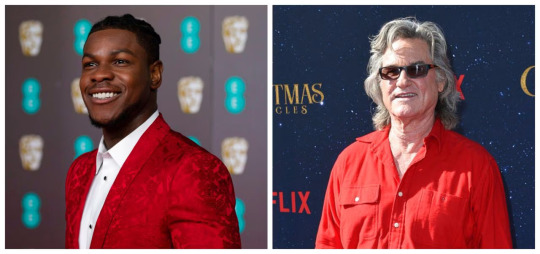
Famous March 17, 2022 birthdays.
Adm. Thomas Mattingly; Jr. (American naval admiral & astronaut), 86
Clarence Gaston (American baseball player), 78
Kurt Russell (American actor)(pictured), 71
William Gorham (American-Irish guitarist & songwriter), 71
Craig Ramsey (Canadian hockey player & coach), 71
Lesley-Anne Down FauntLeRoy (British actress & singer), 68
Gary Sinise (American actor & humanitarian), 67
Christian Clemenson (American actor), 64
Vicki Lewis Allen (American singer & actress), 62
Kazimierz Siemaszko (American actor), 61
Janet Gardner (American singer), 60
Rob Lowe (American actor & director), 58
Billy Corgan; Jr. (American singer & guitarist), 55
Patrick Lebeau (Canadian hockey player), 52
Bill Mueller (American baseball player), 51
Mia Hamm-Garciaparra (American soccer player), 50
Caroline Corr (Irish drummer), 49
Vance Wilson (American baseball player & coach), 49
Natalie Zea Schuldt (American actress), 47
Scott Downs (American baseball player), 46
Nicky Jam (American singer & actor), 41
Chris Davis (American baseball player), 36
Silke Spiegelburg (German pole vaulter), 36
Ryan Parent (Canadian hockey player & coach), 35
Bobby Ryan (American hockey player), 35
Emmanuel Sanders (American football player), 35
Grimes (Canadian artist & singer), 34
Ryan White (Canadian hockey player), 34
Harry Melling (British actor), 33
Saina Nehwal (Indian badminton player), 32
John Adegboyega aka John Boyega (British-Nigerian actor & movie producer)(pictured), 30
#Celebrities#Movies#TV Shows#U.K.#Massachusetts#Planes#Boats#Illinois#Sports#Baseball#Texas#Music#Hockey#Canada#Ontario#Iowa#Ohio#Alaska#Virginia#Quebec#Missouri#Soccer#Alabama#Arizona#Kentucky#Germany#Saskatchewan#New Jersey#Football#British Columbia
2 notes
·
View notes